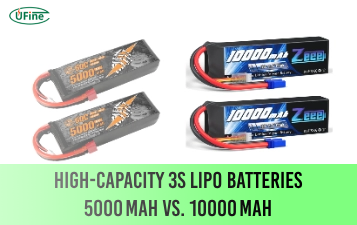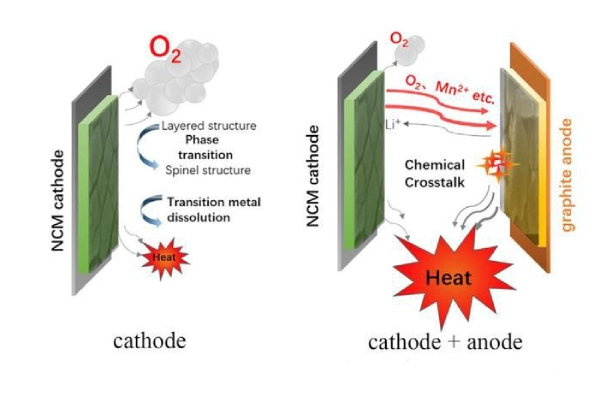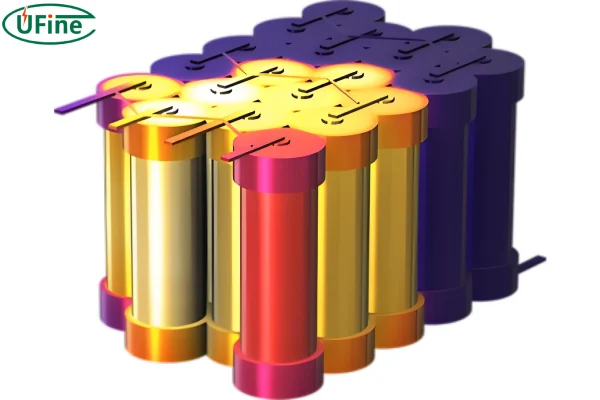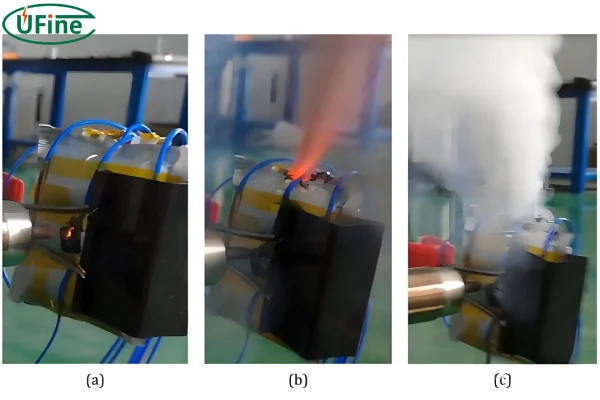With the development of technology, electric vehicles have gradually entered people’s view. As the core part of electric vehicles, the safety and stability of batteries are crucial. In recent years, LiFePO4 thermal runaway has gradually received attention. In this article, we will discuss the causes, effects, and solutions of LiFePO4 battery thermal runaway.
Part 1. What is battery thermal runaway?
Battery thermal runaway refers to the situation when the battery is in use or charging, due to various reasons, the internal temperature of the battery rises sharply, and it cannot be effectively controlled or cooled, which may eventually lead to serious safety problems such as battery overheating, combustion or explosion.
Why do electric vehicle batteries catch fire quickly?
Electric vehicles generally use lithium batteries, which are chemical batteries. In some extreme cases, the electrodes will short-circuit. This chemical reaction is more intense. The damaged battery will generate heat and burn. In addition, there are many flammable materials in the car, such as car seats, which will accelerate the spread of the fire.
Part 2. Thermal runaway principle
During the thermal runaway of lithium-ion power batteries, the battery usually undergoes solid electrolyte interface (SEI) film decomposition reaction, positive or negative active material and electrolyte reaction, electrolyte decomposition reaction, negative active material and binder reaction, etc.
In high temperature environment, the capacity of lithium-ion batteries will be significantly reduced. At the same time, the internal resistance of the positive and negative electrodes of the battery has increased. Among them, the increase in the internal resistance of the positive electrode is relatively small, while the increase in the internal resistance of the negative electrode is more significant.
When the temperature exceeds 80℃, thermal decomposition reaction will occur inside the lithium-ion battery. In the temperature range of 80-120℃, the SEI film will decompose, resulting in the loss of protection of the negative electrode active material. Once the negative electrode active material loses protection, the lithium metal embedded in the negative electrode will react with the electrolyte.
If the temperature continues to rise, it will cause the battery porous diaphragm to close. Common diaphragm materials are polyethylene (PE) and polypropylene (PP). The starting temperature of the diaphragm closed is about 130℃ and 170℃ respectively. The diaphragm closed will block the current loop of the external short circuit and play a certain self-protection role. However, if the temperature continues to rise, the diaphragm will disintegrate at around 190℃, causing an internal short circuit.
Excessive current will cause the temperature to rise rapidly, which will in turn cause the positive electrode decomposition and electrolyte decomposition reaction. The decomposition of the positive electrode releases a large amount of heat, which is considered to be one of the important reasons for triggering thermal runaway.
Lithium-ion positive electrode materials release oxygen during decomposition. As the gas gathers and expands rapidly, the pressure inside the battery will rise rapidly. Once the internal pressure exceeds the limit that the battery safety valve can withstand, a jetting phenomenon will occur. This will pose a serious threat to the safety and stability of the battery.
Part 3. What causes thermal runaway in battery electric vehicles?
There are three processes for thermal runaway, from induction to occurrence to spread. The main causes of thermal runaway are overheating, overcharging, internal short circuit, collision and other factors.
Thermal runaway triggering methods: The triggering methods of thermal runaway mainly include mechanical abuse, electrical abuse and thermal abuse.
Mechanical abuse
Vehicle collision and other causes damage to the vehicle structure and then short circuit of the Class B circuit. The battery is physically damaged by extrusion, puncture and other physical structures;
Electrical abuse
Unexpected large currents such as overcurrent and short circuit in the external circuit exceed the maximum current that the battery or battery system can withstand, causing cable heating and battery thermal runaway;
Thermal abuse
The battery is heated beyond the safety threshold of the battery cell, causing thermal runaway of the battery cell. The heating may come from adjacent thermal runaway batteries or from the heat accumulated by the failure of the vehicle’s cooling system.
There is a certain internal connection between the three abuse triggering methods. When mechanical abuse occurs, the battery will deform. This deformation will further cause a short circuit inside the battery, which is called electrical abuse. Electrical abuse is usually accompanied by the generation of Joule heat and chemical reaction heat. The accumulation of these two types of heat will lead to thermal abuse of the battery. Thermal abuse will further cause a sharp rise in battery temperature, ultimately triggering a thermal runaway chain reaction in lithium-ion batteries.
Part 4. Why does LiFePO4 thermal runaway?
LiFePO4 battery thermal runaway is a complex process, involving a variety of factors. The following are the main reasons:
1. LiFePO4 battery internal short circuit
LiFePO4 battery internal short circuit can be caused by defects in the battery manufacturing process, damage during use, or accumulation of electrolytes inside the battery. The large amount of heat generated by the short circuit cannot be emitted in time, triggering thermal runaway.
2. Over-charging or over-discharging.
When lithium iron phosphate LiFePO4 batteries are overcharged or overdischarged, it will cause the internal temperature of the battery to rise, which will lead to thermal runaway.
3. External environmental influences
External environmental factors such as high temperature, extrusion, pinprick may also trigger thermal runaway.
Part 5. What happens if LiFePO4 thermal runaway?
LiFePO4 thermal runaway will not only affect the performance of the battery but also may cause safety problems.
1. Battery performance degradation
Thermal runaway will cause the internal temperature of the LiFePO4 battery to increase, which will reduce the capacity of the battery, charge and discharge performance, and shorten the service life of the battery. 2.
2. Safety risk
The high temperature generated by the thermal runaway of LiFePO4 may cause fire or explosion, posing a threat to the safety of people and property.
3. Electric vehicle performance is affected
Lithium iron phosphate LiFePO4 batteries are the power source of electric vehicles. thermal runaway of LiFePO4 may affect the normal operation of the vehicle, or even lead to the vehicle can not start.
Part 6. How to avoid LiFePO4 thermal runaway?

To reduce the risk of LiFePO4 thermal runaway, countermeasures can be taken in the following aspects.
1. Battery pack balancing management
Ensure that each cell in the battery pack is in a similar working condition through balanced management techniques to avoid overcharging or over discharging of individual cells.
2. Battery cooling system optimization
Adopt advanced cooling technology, such as liquid cooling, heat pipe cooling, etc., to improve the heat dissipation performance of the battery and reduce the risk of LiFePO4 thermal runaway.
3. Battery thermal management
Establish an effective thermal management system. Real-time monitoring and temperature control of the battery pack to avoid thermal runaway caused by high temperature.
4. Enhance battery safety testing
Through X-ray testing, ultrasonic testing and other means of battery safety performance testing. Timely detection of potential safety hazards.
5. Enhance the quality of battery manufacturing
Strengthen the control of the battery manufacturing process. Improve the consistency and reliability of the battery and reduce the risk of thermal runaway caused by manufacturing defects.
6. Correct use and maintenance of batteries
Understand the characteristics of lithium iron phosphate LiFePO4 batteries and the precautions for their use to avoid overcharging or over-discharging due to improper use.
7. Establishing contingency plans
For the possible thermal runaway of LiFePO4 batteries, establish a corresponding emergency plan to ensure that the incident can be dealt with in a timely and effective manner to maximize losses.
8. Battery recycling
Establish a perfect battery recycling system, professional treatment and recycling of decommissioned batteries to reduce safety problems caused by improper disposal of used batteries.
9. Research and development of new safety batteries
Continuously carry out research and development of new safe batteries, and seek safer and more reliable battery materials and processes. Fundamentally reduce the risk of thermal runaway of batteries.
10. Strengthen policy regulation
The government should strengthen the supervision of the lithium iron phosphate battery industry, formulate strict industry standards and norms, and promote the healthy development of the industry. At the same time, production enterprises that violate safety regulations should be severely punished by the law.
Part 7. Summary
LiFePO4 thermal runaway is a complex problem that needs to be studied and coped with from many aspects. By taking effective countermeasures, the risk of LiFePO4 battery thermal runaway can be reduced to ensure the safe and stable operation of electric vehicles. At the same time, relevant research and investment should continue to be strengthened to promote the continuous progress and innovation of lithium iron phosphate LiFePO4 battery technology to provide strong support for the development of the electric vehicle industry.
Part 8. FAQs
-
Can LiFePO4 batteries go into thermal runaway?
LiFePO4 batteries have a lower risk of thermal runaway compared to other lithium-ion chemistries due to their stable chemistry and higher thermal stability. -
What is the thermal runaway temperature of the LFP battery?
The thermal runaway temperature of an LFP battery is typically above 250°C, which is higher than other lithium-ion chemistries. -
What are the thermal runaway gases in LFP?
LFP batteries produce minimal or no hazardous gases during thermal runaway, making them safer compared to other lithium-ion chemistries. -
Can lithium batteries have thermal runaway?
Yes, lithium batteries, including LiFePO4, can experience thermal runaway if they are subjected to extreme conditions, such as overheating, overcharging, or physical damage.
Related Tags:
More Articles

High‑Capacity 3S LiPo Batteries: 5000 mAh vs. 10000 mAh
Compare 3S LiPo 5000mAh vs 10000mAh batteries by weight, power, and use. Find the best fit for your drone, RC car, or boat setup.
Top 5 Applications for Small 3S LiPo Batteries
Small 3S LiPo batteries power drones, RC gear, wearables, and robotics with high energy and low weight. Making them ideal for compact electronics projects.
Building and Charging Your Own 3S LiPo Pack: A Step‑by‑Step Guide
Learn how to build, balance, and charge a 3S LiPo battery pack safely at home with this complete DIY guide for hobbyists and beginners.
How to Choose the Right LiPo Battery Plug Type?
Discover the best LiPo battery plug types, how to choose them, and expert tips for safe usage, soldering, and maintenance.
Choosing the Right Connector for Your 3S LiPo Battery
Choosing the right 3S LiPo connector depends on current, space, and use. Learn the pros and cons of XT60, JST, EC3, and more.









